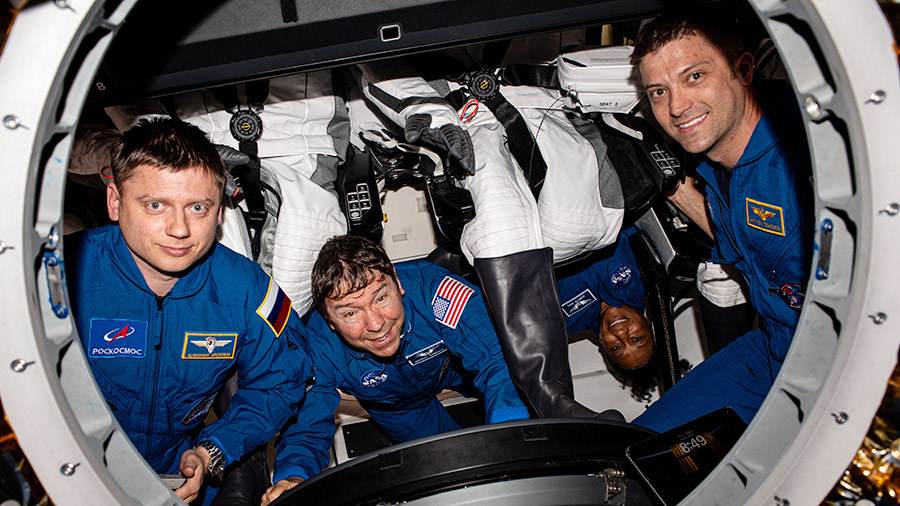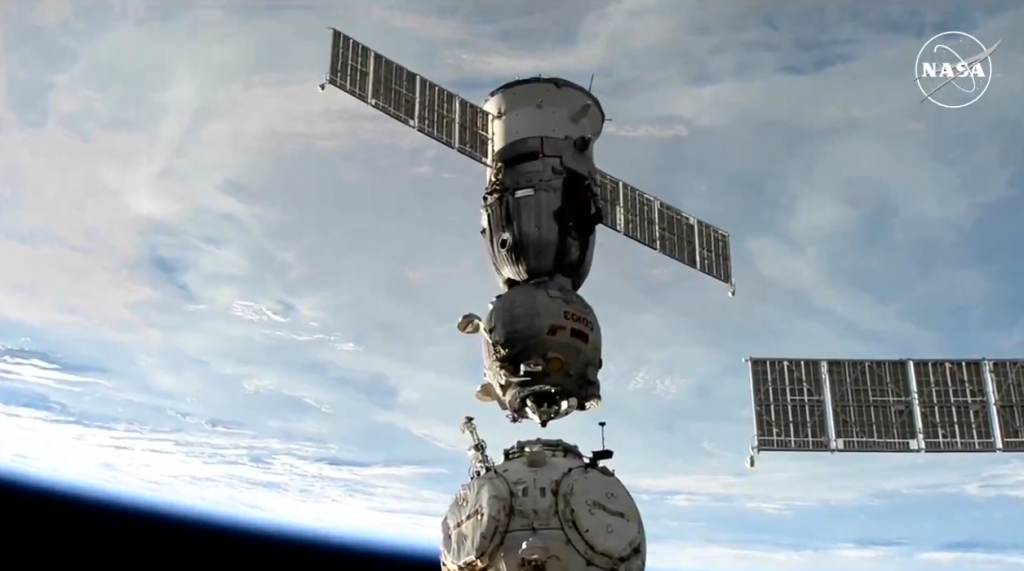
Four new flight engineers are adapting to life aboard the International Space Station as a quartet of Expedition 70 crew members nears the end of its mission. Meanwhile, the expanded crew still found time for a variety of biology and physics studies while maintaining the upkeep of the orbital outpost.
First time space-flyers Matthew Dominick, Jeanette Epps, and Alexander Grebenkin along with veteran station resident Michael Barratt are in their first full day on the orbital outpost. They will spend a few hours each day for about a week familiarizing themselves with space station systems and getting up to speed with life in weightlessness. The new foursome will be conducting advanced space research and orbital lab maintenance activities for the next six months.
The Expedition 70 crew will soon return to seven residents again as another quartet that has been on the station since Aug. 27, 2023, prepares for its departure. NASA astronaut Jasmin Moghbeli will command Pilot Andreas Mogensen, and Mission Specialists Satoshi Furukawa and Konstantin Borisov back to Earth no earlier than Monday, March 11. The foursome will undock from the Harmony module’s space-facing port inside the SpaceX Dragon “Endurance” spacecraft and parachute to a splashdown off the coast of Florida ending a six-and-a-half-month mission orbiting Earth.
The four homebound crew members on Wednesday checked the pressure suits they will wear inside “Endurance” during the ride back to Earth. At the end of the day, they joined the seven other orbital residents and reviewed everyone’s roles and responsibilities in the unlikely event of an emergency aboard the station.
There was still time for science in space as Dominick set up medical hardware including an ultrasound scanner and blood pressure measurement gear. He then conducted scans on NASA Flight Engineer Loral O’Hara and measured her blood pressure collecting data for the CIPHER suite of 14 human research experiments. CIPHER is documenting an astronaut’s health during a long-term spaceflight.
Furukawa installed science hardware in the Destiny laboratory module for a semiconductor manufacturing study that could support production in space and more efficient technologies on Earth. Epps set up a microscope to observe the growth of cell cultures for an investigation that may promote the creation of artificial organs for transplant patients on Earth. Finally, Grebenkin attached sensors to himself recording his heart activity in microgravity.
In the Roscosmos segment of the station, cosmonauts Oleg Kononenko and Nikolai Chub continued installing cargo containers inside the Zarya module. The duo earlier checked out carbon dioxide monitors and cleaned fan screens inside the Progress 86 cargo craft.
Learn more about station activities by following the space station blog, @space_station and @ISS_Research on X, as well as the ISS Facebook and ISS Instagram accounts.
Get weekly video highlights at: https://roundupreads.jsc.nasa.gov/videoupdate/
Get the latest from NASA delivered every week. Subscribe here: www.nasa.gov/subscribe




